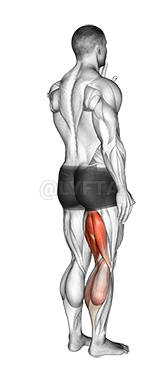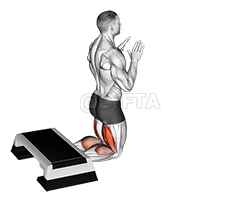
Dead Bug
Exercise Profile
Related Exercises:
Introduction to the Dead Bug
The Dead Bug exercise is a core-strengthening workout that helps improve stability, balance, and coordination. It is ideal for individuals at all fitness levels, from beginners to advanced athletes, due to its low-impact nature. People would want to do this exercise to enhance their overall physical performance, prevent back pain, and improve posture.
Performing the: A Step-by-Step Tutorial Dead Bug
- Engage your core by pressing your lower back into the floor, ensuring there's no gap between your back and the floor. This is your starting position.
- Slowly extend your right arm and left leg away from you, lowering them towards the floor but not touching it. Keep your movements controlled and maintain the engagement in your core.
- Return your right arm and left leg to the starting position.
- Repeat the same movement with your left arm and right leg. This completes one repetition. Aim for at least 10 repetitions.
Tips for Performing Dead Bug
- Controlled Movements: When performing the Dead Bug, it's crucial to move your limbs in a slow, controlled manner. Rushing through the movements or using momentum can significantly reduce the exercise's effectiveness and increase the risk of injury.
- Synchronized Movement: Ensure that your opposing arm and leg are moving together. A common mistake is moving the same side arm and leg together, which is not the correct form for this exercise.
- Breathing: Don't hold your breath while performing the Dead Bug. Instead, exhale as you lower your arm and leg, and inhale as you return to the starting position. Proper
Dead Bug FAQs
Can beginners do the Dead Bug?
Yes, beginners can do the Dead Bug exercise. It is a simple and effective exercise to strengthen the core and improve stability and balance. The Dead Bug exercise is especially suitable for beginners because it is low impact and can be easily modified to different fitness levels. However, it's important to perform the exercise with proper form to avoid injury and maximize effectiveness. It may be helpful to have a trainer or fitness professional demonstrate the exercise initially.
What are common variations of the Dead Bug?
- The Weighted Dead Bug: This version incorporates holding a weight in your hands or placing a resistance band around your feet to increase the intensity of the exercise.
- The Stability Ball Dead Bug: This variation uses a stability ball held between your hands and knees to engage your core muscles more effectively.
- The Dead Bug with Hip Flexion: In this variation, you flex your hips and bring your knees closer to your chest before extending your legs, which works your lower abdominal muscles more intensively.
- The Dead Bug with a Twist: This version involves twisting your torso to touch the opposite knee with your elbow, adding an oblique workout to the traditional dead bug exercise.
What are good complementing exercises for the Dead Bug?
- Bird Dog exercises are another good match, as they target the same muscles as Dead Bug but from a different angle, helping to create a more balanced and comprehensive core workout.
- Hollow Body Holds, like Dead Bug, emphasize the importance of maintaining a neutral spine while engaging the core, thereby enhancing the effectiveness of the Dead Bug exercise by improving overall form and control.
Related keywords for Dead Bug
- Dead Bug exercise tutorial
- Bodyweight workout for waist
- Dead Bug core workout
- At-home Dead Bug exercise
- Dead Bug movement for waist toning
- Bodyweight waist exercise
- Dead Bug workout steps
- How to do Dead Bug exercise
- Dead Bug exercise for waist reduction
- Dead Bug bodyweight training.











